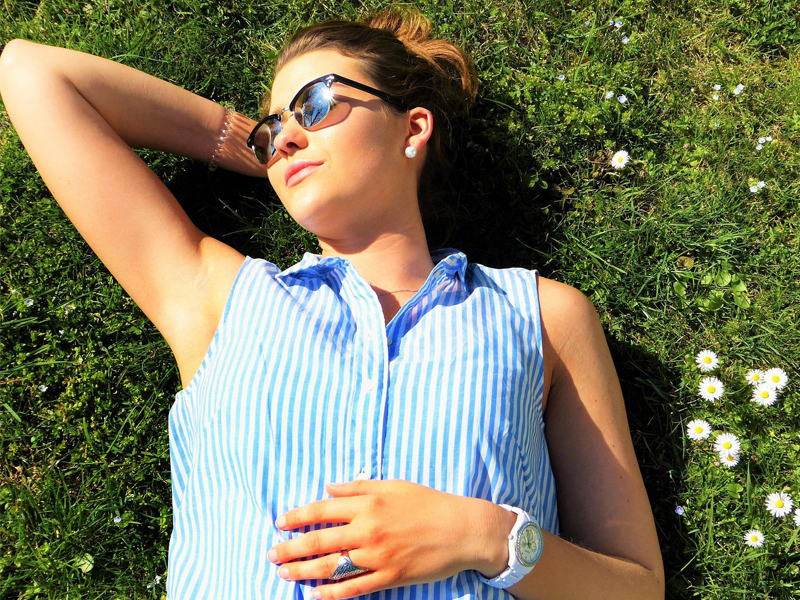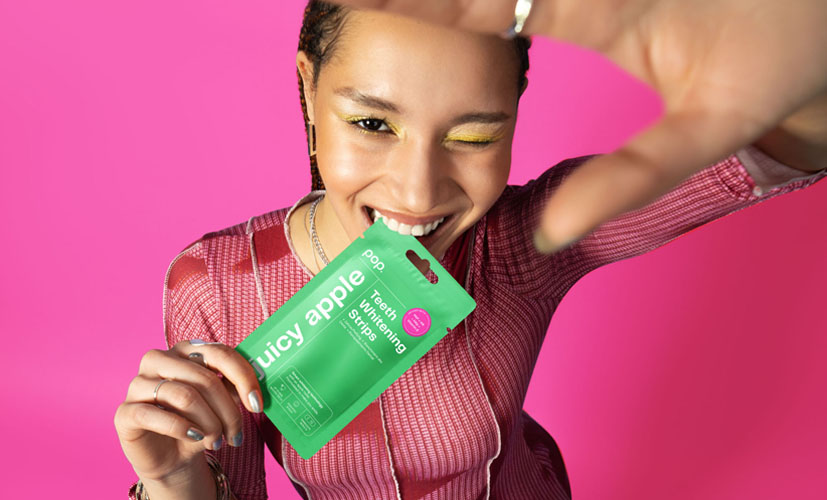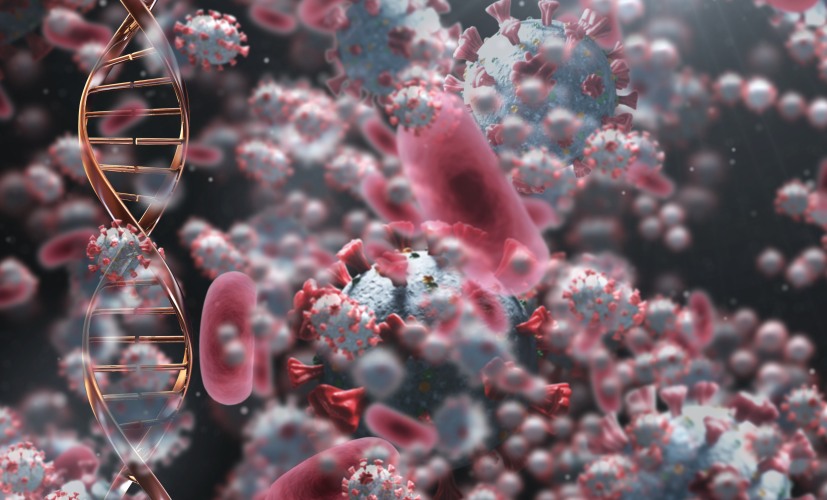
Nobody wants to protect themselves from the first sun rays after a long winter, when our bodies crave warmth the most. Prevention, however, is necessary prior to the thermometer hitting 18 degrees Celsius. The reason being ultraviolet radiation (UVA and UVB), which is equally unhealthy for the skin, even if it is cloudy and dark outside. To avoid undesirable redness, rashes and itchiness in the season of short sleeves and skirts, don’t forget about sun protection even in the spring.
The paradox of prevention
The sun is our best friend and this has been an undeniable fact of life since the very beginning. It is one of the most important sources of life and it participates in a number of beneficial health processes. The sun is responsible for vitamin D synthesis, for strengthening the immune system, as well as for regulation of the metabolism, the sleep cycles and general wakefulness. Furthermore, it influences our hormonal balances and often shields us from depression.
Our skin cannot, without the sun, produce melanin, which is responsible not only for that beautiful and shiny tan, but also for a strong and healthy skin. Another well-known fact, the sun can heal and therefore often aids conventional medicine, when confronted with acne, psoriasis, eczemas and other skin conditions.
So why is everybody talking about prevention?
Before we arrive at the answer, let us first learn about sunlight.
The light we cannot see
Sunlight contains different types of light rays, including the visible light, ultraviolet light (noted as UV) and infrared light.
The visible light, as the name suggests, is the only part of the light spectrum visible to the human eye. Practically speaking, it is that 50% of light, which after being refracted is responsible for the big variety of colours around us. The visible light is healthy for the skin but a prolonged exposure can cause a series of cellular damages.
Ultraviolet light, on the other hand, contains three types of rays – UVA, UVB and UVC, with each possessing a different wavelength. The shortest are UVC rays, they are blocked before entering the atmosphere and don’t reach our skin. However, UVA and UVB light not only reach but penetrate the skin and are able to travel through clouds and smog. Together they make up just 5% of sunlight but are responsible for the most serious skin damage.
Finally, infrared light is also invisible but is in contrast to ultraviolet light very weak. It can penetrate deeply into the skin, under the dermis, but does not contain sufficient energy to affect it. Infrared light makes up the remaining 45% of sunlight.
The truth is that none of these three types of light rays are influenced by seasons or the atmospheric conditions outside. This means the sun in the spring is as strong as it is in the summer or winter, even if we are unable to sense it.
UVA - aging
These rays are said to be the most dangerous for the skin, as they penetrate deeply into the dermis and can affect the cellular DNA over time.
Very typical for UVA light is the stimulation of free radicals, which our bodies cannot always properly handle. Free radicals are highly reactive oxygen molecules and require an according number of anti-oxidants to be neutralised. If for some reason the balance between the two is impaired, the free radicals start damaging nearby skin cells by causing the so-called oxidative stress. This process is irreversible and can lead to permanent change in the cellular DNA of the skin.
This is the reason why UVA light is associated with the worst of skin problems:
- Photoaging: is the premature aging of the skin. In 90% of cases, it is caused by the sun, while in the other remaining 10% the cause is blue light emitted from screens, as well as other types of radiation. The visible result of photoaging is the early appearance of wrinkles, hanging skin and an uneven tan. It is caused by free radicals, which damage the structural integrity of cells by dissolving collagen and elastin, both responsible for smooth and tight skin.
- Light allergies. This condition is usually genetically inherited, but several studies show that 80% of these allergies are directly linked to UVA light. You can easily identify if the rash is caused by a sun allergy, namely when the rash appears 2-3 days after a prolonged sun exposure. When people are sensitive to UVA light, their immune system signals this in the form of redness and itchiness in the affected areas.
- Hyperpigmentation. Also known as ‘’sun’’ or ‘’age’’ spots, they appear most often on the face and other parts of the body, which have been exposed to the sun. Hyperpigmentation is caused by an overproduction of melanin – the natural skin pigmentation. The reason for all this again is the oxidative stress. To protect us from dangerous UV light rays, the body begins to excessively synthesise melanin. This is a natural process, because of which our skin grows darker and thereby protects us from burns. Excessive sun exposure, however, can cause a disbalance in the process, resulting in hyperpigmentation and an uneven tan.
UVB – burning
Unlike UVA light, these light rays can even penetrate the deepest parts of the skin, namely the epidermis. This is why they are responsible for surface redness and burns. In a number of cases can UVB light be helpful, as they are able to remove scars from psoriasis and eczema, but remain dangerous for the healthy and unprotected skin.
One of the biggest risks for the body is the fact that UVB light is directly absorbed by our DNA, which can as a result cause heavy skin diseases, such as actinic keratosis or cancer. They can also lead to a temporary thickening of the skin and irreversible change in the body moles, especially after often and prolonged sun exposure.
- Basal-cell carcinoma appears in the form of small, slowly growing and shiny pink\ red swellings. These are found most often on the face, head skin, ears, hands, shoulders and back.
- Squamous cell carcinoma usually takes the form of pink swellings. They are covered by thick and peeling skin on the surface and appear most often on the face, neck, lips, ears, hands, shoulders, hands and legs.
- Melanoma is the most dangerous form of cancer. Its first symptom is often the appearance of a new mole or the change in appearance of an existing one. They can be found on every part of the body, but most often on the back, legs, hands and face.
In case you suspect or are otherwise worried about a mole or a swollen part of your skin, you should consult your doctor or a dermatologist.
Sunscreen for help
You don’t have to escape the sun to take care of your skin. Every season of the year is wonderful and can be fully enjoyed, if you are armed with the proper photoprotection and avoid excessive sun exposure.
If you have delicate skin and already notice the first signs of photoaging, you should choose dermo-cosmetics that combine sun protection with prophylaxis and regeneration. These are products insuring protection against the whole spectrum of unhealthy sun radiation, including blue light emitted by all electronic devices.
If you are genetically predisposed to cancer, there are new special and revolutionary formulas, which protect the skin from cellular mutations. These cosmetics don’t allow the epidermis or the dermis to absorb the dangerous light rays, which in turn causes the damage of cellular DNA. They can prevent irritations and even sun allergies, as they posses an anti-oxidative property and strengthen the natural regenerative powers of the skin.
The more demanding ladies can rely on coloured photoprotection. These are lotions, which cover redness and imperfections, whilst simultaneously giving you an even skin tan and protect from dangerous UV light. They can be applied on the face and on the body alike.





